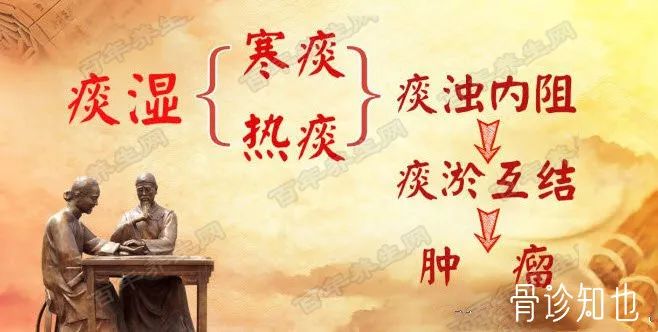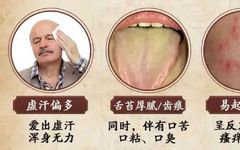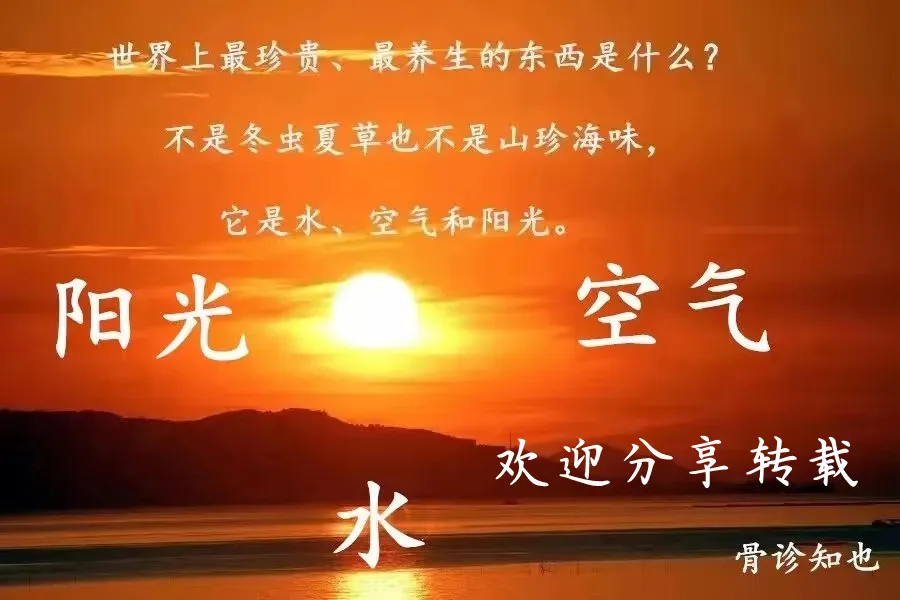
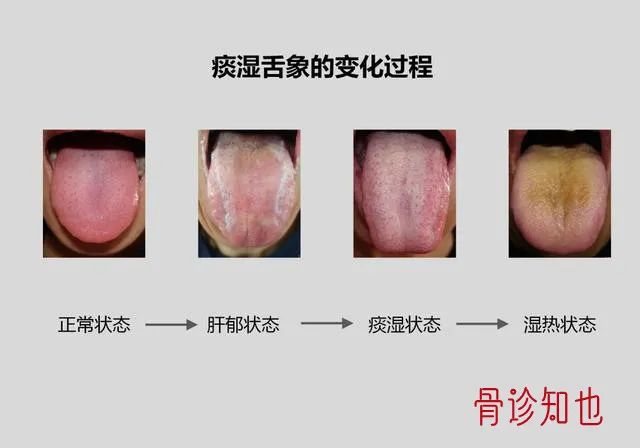


Phlegm-dampness is a pathological condition that refers to a symptom of the body’s constitution, also known as the “cold and damp constitution,” often caused by improper diet or illness.
Here, “phlegm” does not merely refer to the common understanding of phlegm but rather to the pathological accumulation of body fluids; “dampness” can be categorized into internal and external dampness. External dampness refers to environmental humidity, such as being caught in the rain or living in a damp environment, which can invade the body and cause illness; internal dampness refers to dysfunction in the digestive system leading to uncontrolled fluid movement within the body, resulting in the accumulation of fluids, often due to excessive intake of moist foods, alcohol, dairy, or cold beverages.

 Characteristics of Individuals with Heavy Phlegm-Dampness
Characteristics of Individuals with Heavy Phlegm-Dampness

1. Body shape and complexion: The body is overweight, with a soft and full abdomen, swollen limbs that leave indentations when pressed, a generally mild temperament, oily skin, a pale yellow and dull complexion, slightly swollen eyelids, easy fatigue, a lack of blood color in the face, often appearing bluish with little luster.
2. Tongue: The tongue is enlarged with a slippery and greasy coating, often white and sticky or sweet, with teeth marks along the edges.
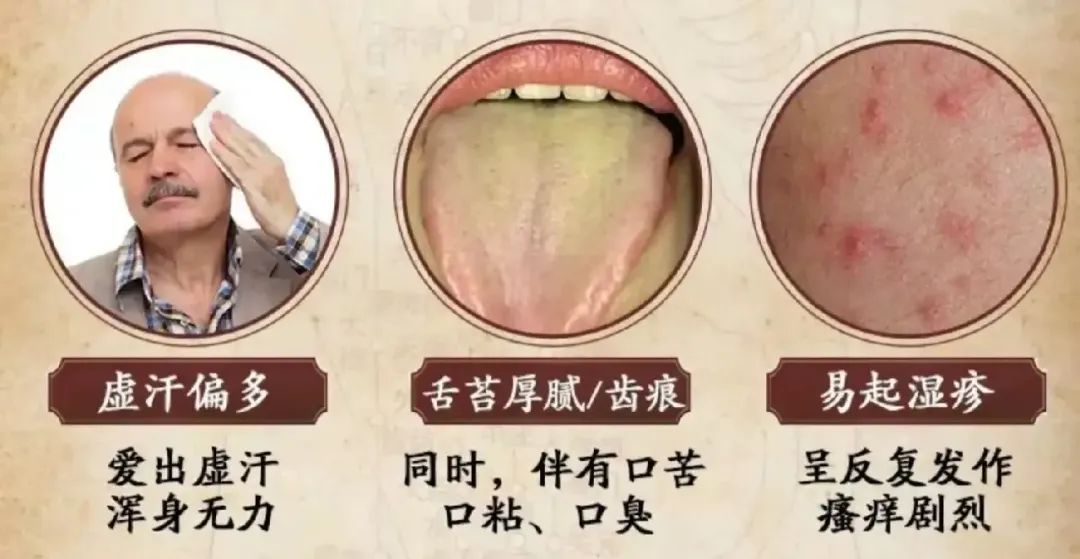
3. Mouth, hands, and feet: The mouth feels sticky, lips are pale, rarely feeling thirsty, disinclined to drink water, prone to sweating, with cool skin after sweating, heavy feeling in the head and body, joint pain, numbness of the skin, and possible tinnitus, especially common in those over 60 years old.
4. Sensation and sleep: The body feels fatigued, hands and feet are cold, chest tightness, excessive phlegm, easy fatigue, with joint soreness, skin numbness, and gastrointestinal discomfort.
5. Pulse: The pulse is slippery and soft.
6. Preferences: Disinclined to move, drowsy, feeling heavy, preferring fatty, sweet, and sticky foods, feeling better in summer and worse in winter.
7. Bowel and bladder: Frequent, loose stools, especially urgent in the morning, with rapid bowel movements, and urinating three to four times a night with large amounts of clear urine.
1
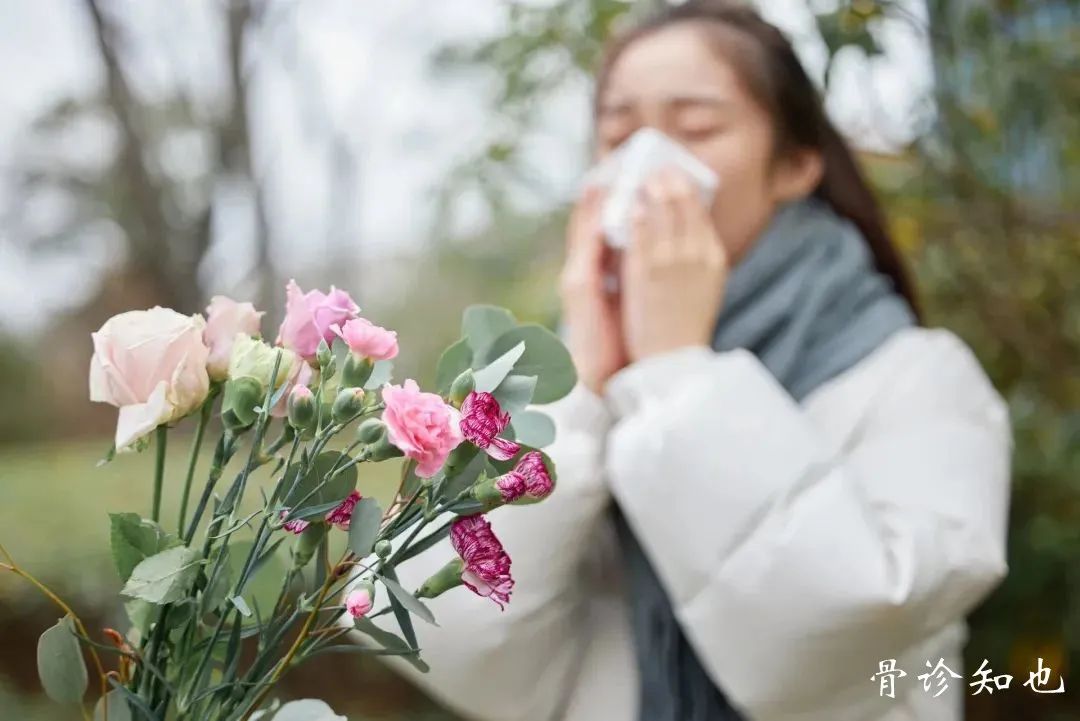
There are likely people around you who often unconsciously clear their throats, frequently looking for a place to spit, as if there is a foreign body sensation in their throat, swallowing saliva frequently, and even having a taste in their mouth while speaking.
These symptoms actually stem from what TCM refers to as “excessive phlegm-dampness.”
When liver qi is stagnant and the functions of the lungs and stomach are disordered, the body fluids cannot be distributed normally, leading to the accumulation of phlegm and fluids, which, along with the upward reversal of lung and stomach qi, ultimately condenses in the throat area.In other words, excessive phlegm-dampness blocks the San Jiao, which in TCM theory is the key channel for the movement of qi and body fluids throughout the body, encompassing all internal organs.
The sticky nature of phlegm-dampness obstructs the smooth flow of qi, blood, and body fluids.
When phlegm-dampness stagnates in the body for too long, it not only leads to bloating, chest tightness, nausea, and other discomforts, but its stickiness further obstructs the functions of the San Jiao, causing fluid movement to become sluggish and generating more phlegm-dampness.This is why many people have tried various methods to resolve phlegm, yet the phlegm in their throat seems persistently difficult to eliminate.
2
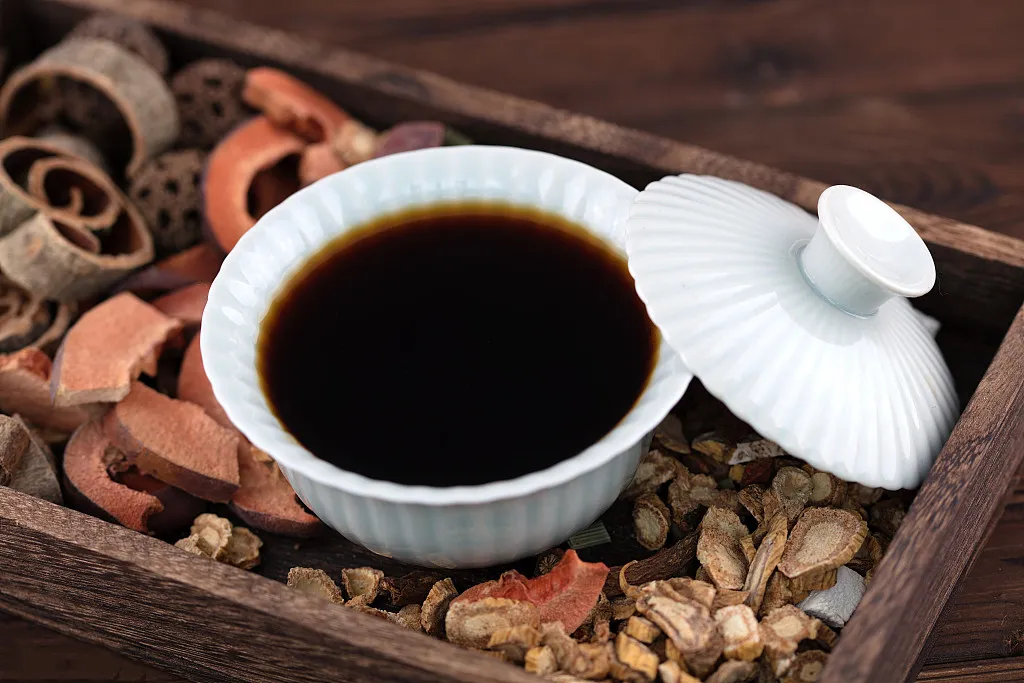
The core of the treatment method lies in soothing the liver, resolving stagnation, harmonizing the stomach, descending rebellious qi, strengthening the spleen, drying dampness, and dispersing phlegm.
As early as thousands of years ago, the medical sage Zhang Zhongjing recognized this pathological mechanism and created a famous formula specifically for treating throat diseases—Ban Xia Hou Po Tang (Pinellia and Magnolia Decoction), known as the premier TCM formula for resolving phlegm.
This formula consists of Ban Xia (Pinellia), Hou Po (Magnolia Bark), Zi Su (Perilla), and Fu Ling (Poria), focusing on resolving phlegm first, allowing qi to flow and phlegm to dissipate, starting from regulating qi to smooth the qi mechanism of the entire San Jiao, and supplemented by strengthening the spleen to resolve phlegm, effectively eliminating phlegm and resolving its accumulation.
Ban Xia Hou Po Tang primarily treats symptoms of excessive phlegm, foreign body sensation in the throat, and chest tightness, targeting the pathological state of phlegm accumulation and qi stagnation. It effectively breaks up phlegm and clears qi stagnation, making it an extremely practical formula.
Phlegm turbidity, this pathogenic factor, obstructs the body’s qi mechanism, particularly affecting the flow of qi in the heart and chest area.
When phlegm turbidity rises to the upper jiao, blocking the qi of the heart and lungs, the patient may experience chest tightness, pain, and shortness of breath, which in Western medicine is often diagnosed as coronary heart disease, but in TCM, it is all caused by phlegm turbidity obstruction.
To effectively treat these symptoms, TCM advocates using methods to open phlegm, break stagnation, and resolve depression to promote the flow of heart and lung qi, akin to dispersing dark clouds to let sunlight shine on the earth.
3

What are the effects of Ban Xia Hou Po Tang?
Initially used to treat Mei He Qi (plum pit qi), which refers to a sensation of obstruction in the throat, where patients often feel a foreign body sensation in the throat that cannot be coughed out or swallowed, possibly accompanied by discomfort in the chest and sides.
TCM believes this is often due to phlegm turbidity stagnation and qi stagnation, where phlegm and qi stagnation together form what is known as “plum pit qi.”
Therefore, treatment requires resolving phlegm and moving qi to break up the old phlegm.
Ban Xia in this formula serves to dry dampness, resolve phlegm, and descend rebellious qi; Hou Po is responsible for moving qi and transforming dampness; Fu Ling can strengthen the spleen and drain dampness, fundamentally cutting off the source of phlegm generation.
Ban Xia and Hou Po, processed with ginger, also have the effect of warming and dispersing phlegm, and can harmonize the stomach to stop vomiting; Zi Su Ye has the property of aromatic qi movement, which can help regulate liver and lung qi.
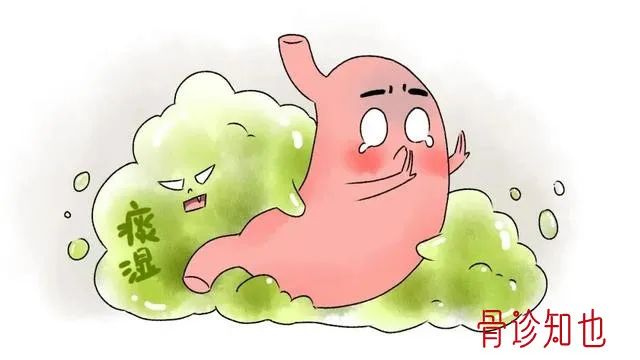
In summary, Ban Xia Hou Po Tang thoroughly clears the “old phlegm” from the body through methods of breaking stagnation, moving qi, resolving depression, and transforming phlegm, restoring the smooth flow of qi.
Although Ban Xia Hou Po Tang was initially used primarily for treating throat-related symptoms, its efficacy extends far beyond that. The influence of phlegm pathogens is widespread, not limited to the throat, but can also affect the heart and chest areas.
Therefore, the application of Ban Xia Hou Po Tang is quite broad; in addition to common throat sensitivity, TCM may also use it to treat chest obstruction (coronary heart disease), asthma, insomnia, depression, anxiety, and various other diseases.
These patients typically exhibit symptoms such as a white greasy tongue coating, slippery pulse, and excessive white sticky phlegm, particularly for some emotional disturbances like insomnia and depression, many patients show similar characteristics.
Ban Xia Hou Po Tang is a formula that many contemporary TCM practitioners, enthusiasts, and learners should study in depth, akin to a universal key that can address numerous diseases caused by phlegm and qi stagnation.
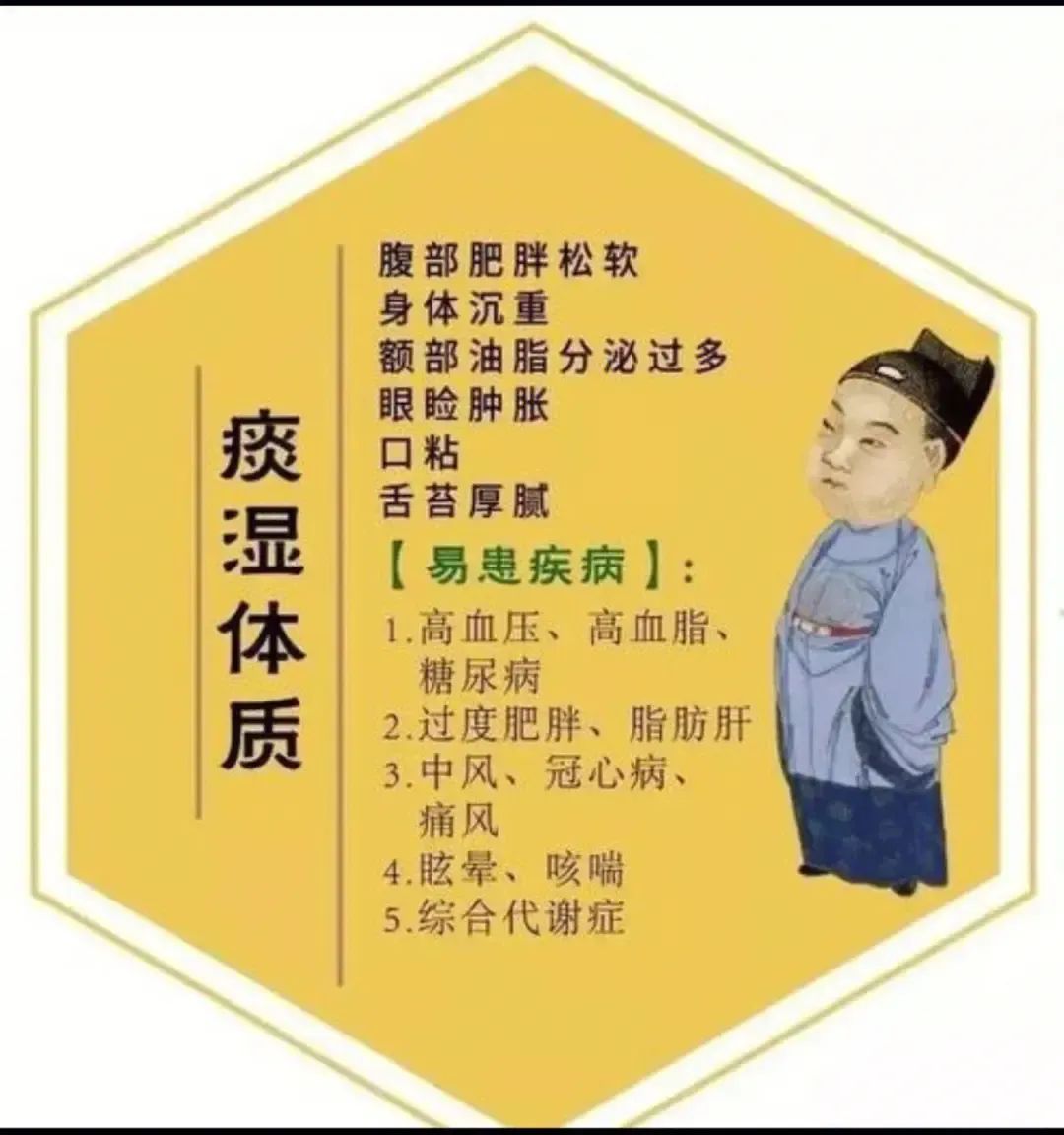
The generation of phlegm-dampness is most closely related to the lungs, spleen, and kidneys, thus the focus should be on tonifying these three organs. If phlegm is generated due to the lungs failing to disperse and descend, leading to fluid accumulation, one should use methods to disperse the lungs and resolve phlegm, selecting Er Chen Tang (Two Aged Decoction); if due to the spleen’s inability to transport and transform, leading to dampness accumulation, one should tonify the spleen and resolve phlegm, selecting Liu Jun Zi Tang (Six Gentlemen Decoction) or Xiang Sha Liu Jun Zi Tang (Aromatic and Digestive Six Gentlemen Decoction); if kidney deficiency leads to an inability to control water, causing fluid to become phlegm, one should warm the yang and resolve phlegm, selecting Jin Gui Shen Qi Wan (Kidney Qi Pill).
The above is for reference only; please consult a physician for guidance in treatment.
Warm Reminder: The various formulas and prescriptions mentioned in this article are for reference and study by professional TCM practitioners only and should not be used as prescriptions. Please do not self-medicate, and this platform does not bear any responsibility for any consequences arising from this!
